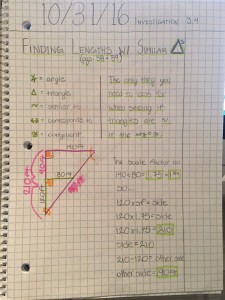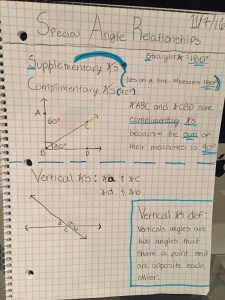Dear Michelle,
I don’t remember a lot about myself as a student in math before a few years ago. All I know is that in third grade, I loved math. In math class, we started learning about multiplication and we had to study our flashcards every day. I always went to my dad when I had trouble or if I needed to talk about math in general. I had a few flashcards I was stuck on and my dad would always make silly phrases so that it would stick in my head. For example, seven times seven equals funky 49 and 8 times 8 equals crazy 64. Ever since then, I started excelling in the multiplication assessments. Another time that I was really excited about math is when I started having a tutor to help me prepare for the ISEE exam. When I started to learn things that we haven’t learned in class yet, my grades were higher and I got into math seminar! (Finally!) I was so excited to be a part of an advanced math group that I couldn’t stop talking about it! To this day I still love multiplication and I always remember the little tunes that my dad made up to help me.
Something I like about learning math is when I have a moment where everything clicks. It is almost as if everything I have been trying to understand makes complete sense and I feel confident in what I’m doing. Something I don’t like about math is that it can be really stressful after school and during a test. I have always had an extremely busy schedule and terrible time management so I always end up stressing myself out by doing things last minute. This year I hope that will end because I have made a system to manage my time! When I am doing homework sometimes I listen to music to drown out other noises. It helps me when I am stuck on something because once it clicks, I work to the beat of the song. Despite what my parents think, music always helps me focus on what I’m doing and blocks out distractions around me. Music has been a huge part of my life because I am a dancer and a musician. The only time I don’t put in earbuds is when I’m studying, when I have a big project, or if I don’t think that the music will help me focus on the assignment.
The last thing I want to mention in my profile is that I haven’t always considered myself a good math student. When I was younger, I always asked for more explanation or help. I thought that since I needed help, I wasn’t good at math. Even though I didn’t realize it at the time, having that extra help made me a better math student. Before I knew it, in 4th grade I came early to school and went to the tech lab for an advanced math class with Debra along with some other kids in my grade. The past few years I have been working hard in math and trying to be the best mathematician that I can be. I hope that this year I will do well in math and I look forward to getting to know you!
Sincerely,
Olivia B.








